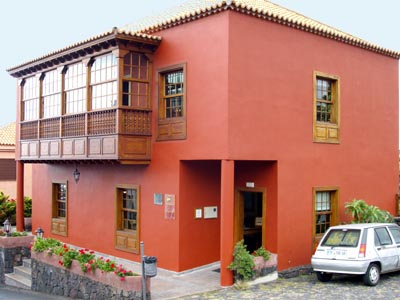 The Wine Museum
The Wine MuseumThe island's wine museum stands just above
La Glorieta Square.
View Larger MapIt's a small museum, but it's only 1.50€ for adults, and that includes a chance to taste a local wine or two.
Upstairs, the exhibition explains the methods and history of wine-making on the the island, and they have a nice collection of old tools used for growing wines or making barrels
Vines have been grown on La Palma since 1505, and they had a wonderful reputation in Europe. According to the tourist office, the Malmsey wine praised by Shakespeare and his contemporaries came from La Palma, although several other places produced it too. Certainly there was no mildew on the island at the time, which must have helped. Being an island effectively kept the grapes in quarantine. But once Santa Cruz de la Palma became a major port, it was only a matter of time, and mildew arrived in the 19th century.
It ruined the grapes, and with it, the winemakers, and the local grape varieties became scarce. Things didn't really improve much until 1994 when La Palma got its "Designation of Origin", which gave local produces a standard to aim for. Now we have a wide variety of certified wines.
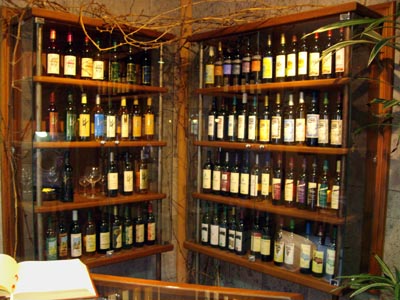
Why so many on such a small island?
Partly it's the variety of grapes, but mostly it's due to the micro-climates. In the wetter, northern end of the island, the vines are trained above head height to reduce the chance of mildew. In the drier south, they're trained low to the ground to stop them drying out (and harvesting them must be back-breaking work).
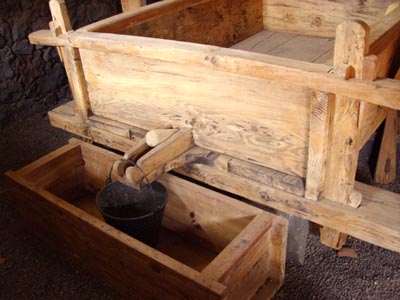 Wine press
Wine pressOutside, different varieties of grape vines fill a little garden. Best of all, at the back there's a little
bodega or wine house, with the original wine press.
Like most places, the grapes were taken to the local wine press. The grapes went in the open box at the top, the juice (or must) came out of the gutter and in the bucket, which is full of holes so as to strain it.
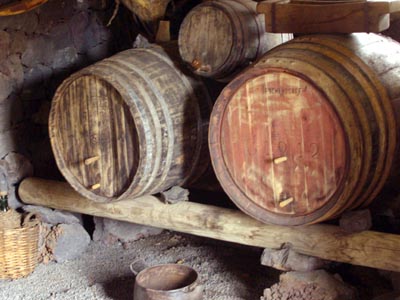 Wine barrels
Wine barrelsOf course the juice had to be stored in barrels until it was ready to drink. Or alternatively, in a wine skin. This one's made from the skin of a goat.
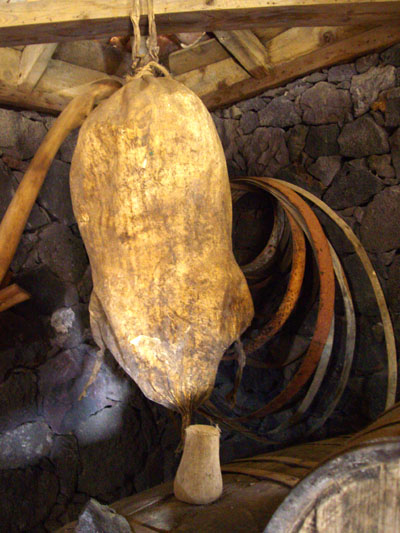 Wine skin
Wine skinLabels: El Paso, La Glorieta, La Palma, wine, wine museum.
Bookmark with:
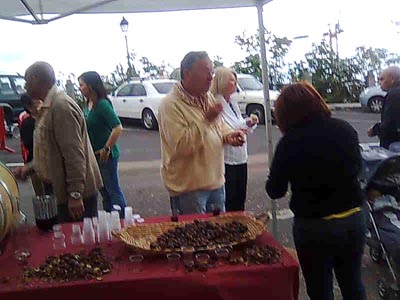

 Del.icio.us
Del.icio.us
 Digg
Digg
 Reddit
Reddit
 Facebook
Facebook
 Furl It
Furl It
 Newsvine
Newsvine









